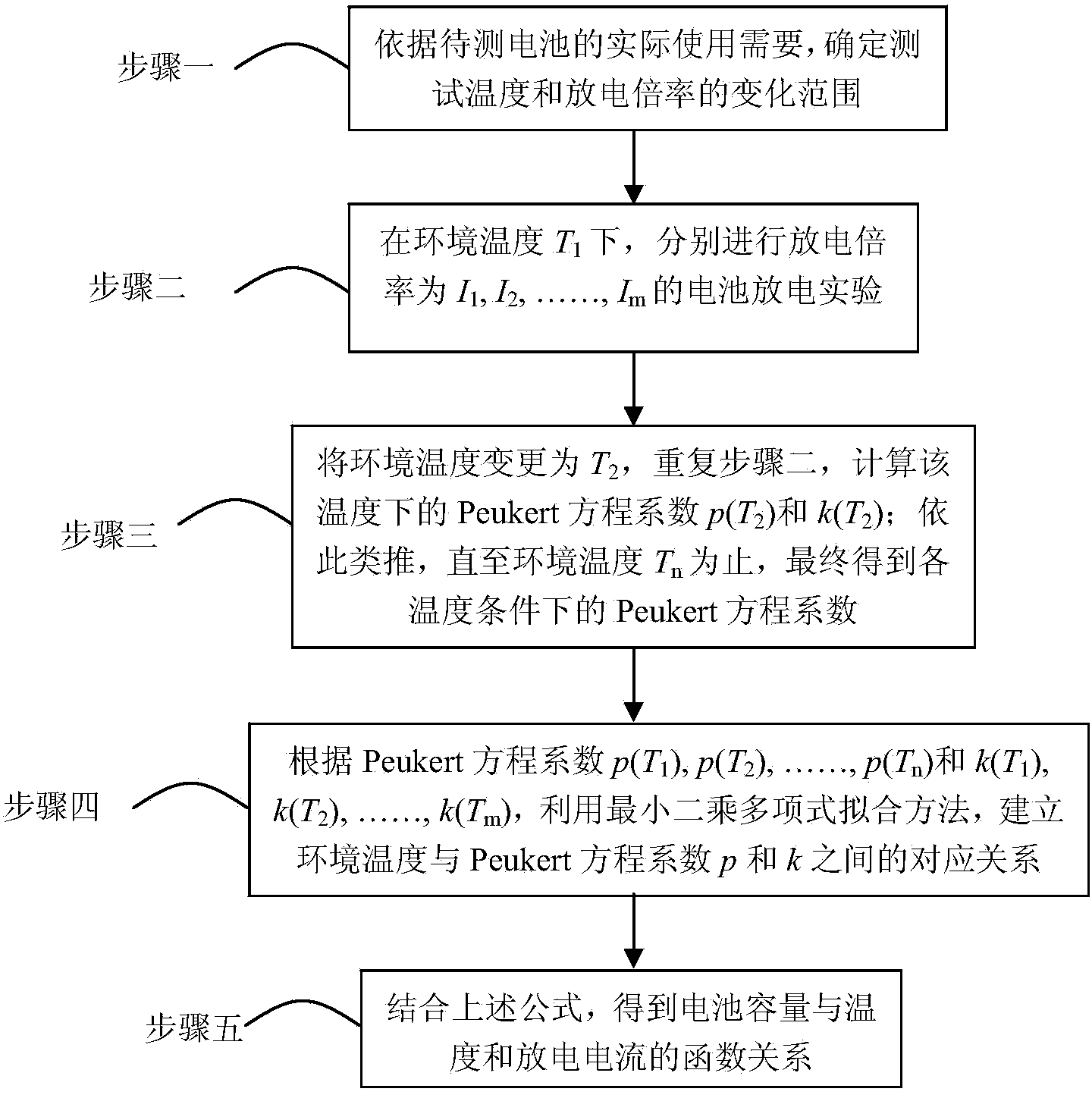Battery capacity forecasting method with self-adaptive temperature compensating function
An adaptive compensation and battery capacity technology, applied in the direction of temperature compensation modification, measurement of electrical variables, measurement of electricity, etc., can solve problems such as temperature capacity estimation deviation correction, and achieve the effect of improving estimation accuracy
- Summary
- Abstract
- Description
- Claims
- Application Information
AI Technical Summary
Problems solved by technology
Method used
Image
Examples
specific Embodiment approach 1
[0032] Specific implementation mode 1: The battery capacity prediction method with temperature adaptive compensation in this implementation mode is implemented according to the following steps:
[0033] Step 1. Determine the variation range of the test temperature and the discharge rate according to the actual use needs of the battery to be tested; wherein, the range of the test temperature is [-10°C, 40°C], and the range of the discharge rate is [0.3C, 3.6°C] C];
[0034] Step 2. At ambient temperature T 1 Next, the discharge rate is I 1 , I 2 ,...,I m In the battery discharge experiment, the charging experiment adopts a unified constant current charging standard, records the discharge power of each cycle, and uses the discharge rate I as the actual usable capacity of the battery. 1 The available capacity of the battery under Q 11 and discharge rate I m The available capacity of the battery under Q 1m , into the Peukert equation
[0035] Q=kI (1-p)
[0036] Among th...
PUM
 Login to View More
Login to View More Abstract
Description
Claims
Application Information
 Login to View More
Login to View More - R&D
- Intellectual Property
- Life Sciences
- Materials
- Tech Scout
- Unparalleled Data Quality
- Higher Quality Content
- 60% Fewer Hallucinations
Browse by: Latest US Patents, China's latest patents, Technical Efficacy Thesaurus, Application Domain, Technology Topic, Popular Technical Reports.
© 2025 PatSnap. All rights reserved.Legal|Privacy policy|Modern Slavery Act Transparency Statement|Sitemap|About US| Contact US: help@patsnap.com



